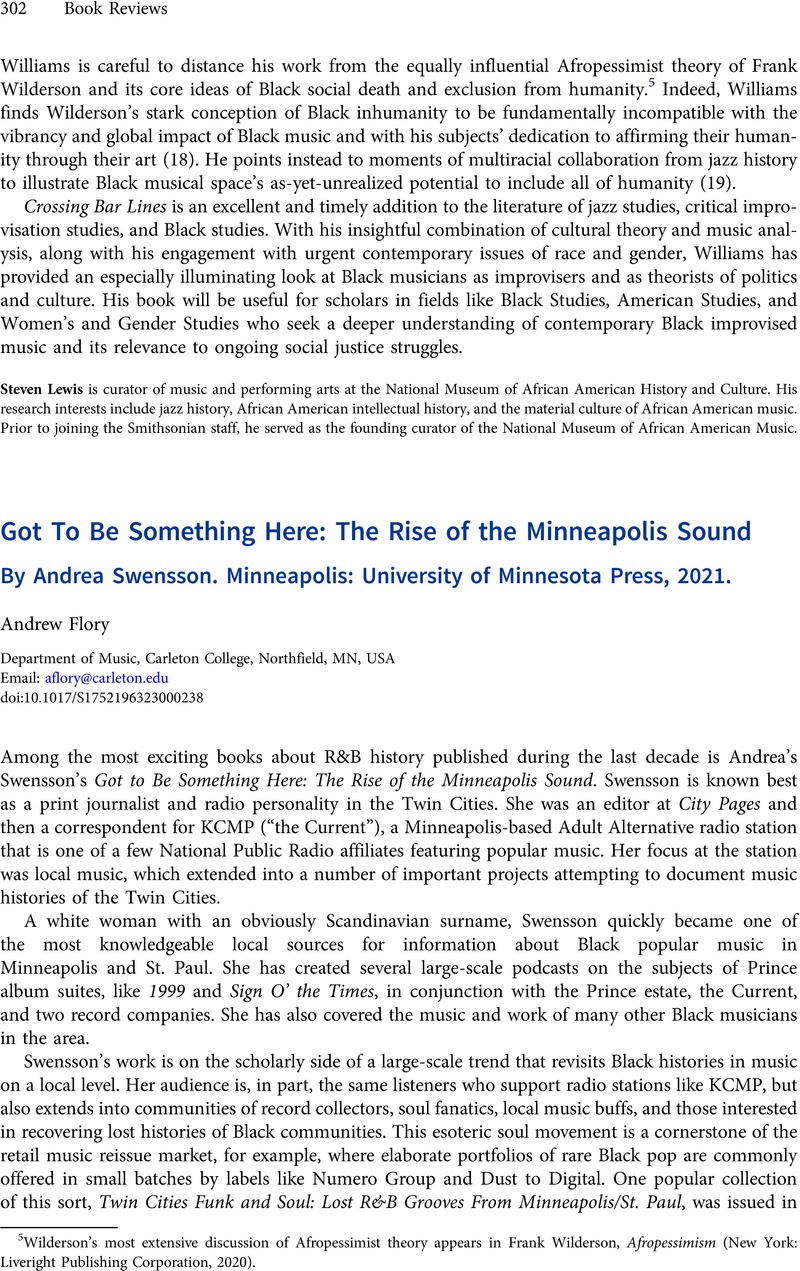No CrossRef data available.
Published online by Cambridge University Press: 06 September 2023

1 Various Artists, Twin Cities Funk and Soul: Lost R&B Grooves from Minneapolis/St. Paul, 1964–1979, Secret Stash Records SSR-LP-25, 2012, long-playing record.
2 Chamblis, Charles and Seru, Davu, Sights, Sounds, Soul: The Twin Cities through the Lens of Charles Chamblis (St. Paul: Minnesota Historical Society Press, 2017)Google Scholar.
3 The Lewis Connection, The Lewis Connection, [self-released] 98–84, 1979, long-playing record. The band name is misspelled, “The Lewis Conection” on the cover.
4 Prince, For You, Warner Brothers BSK-3366, 1979, long-playing record.